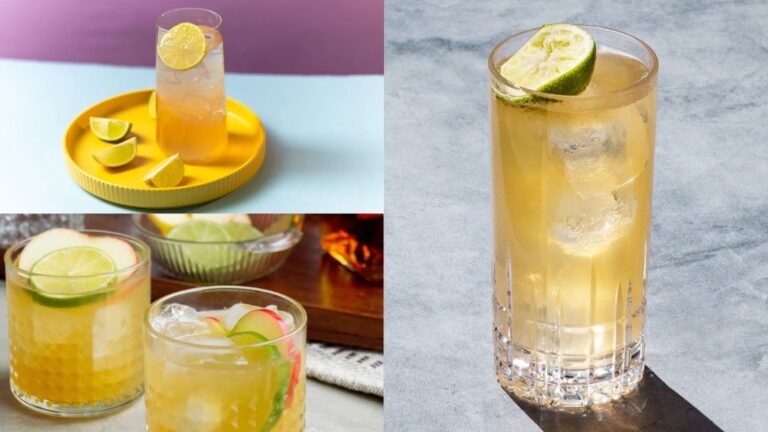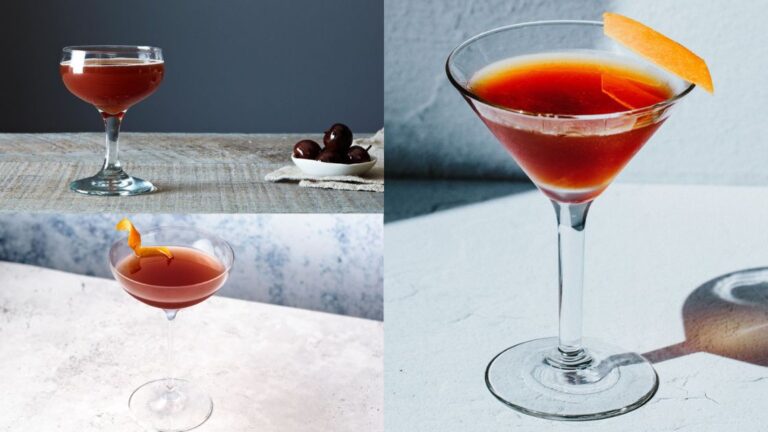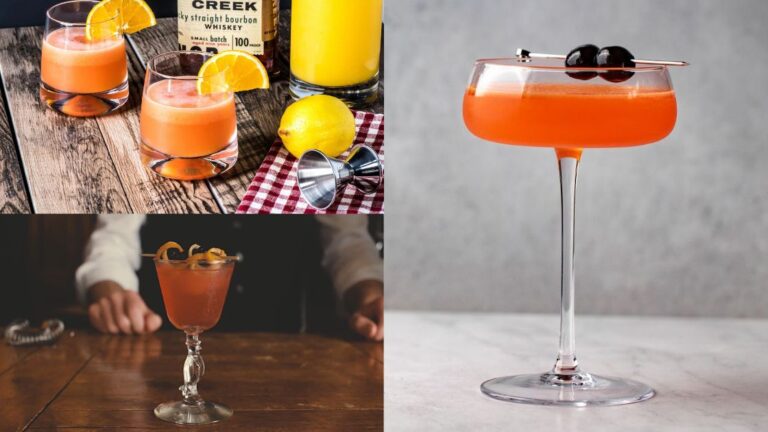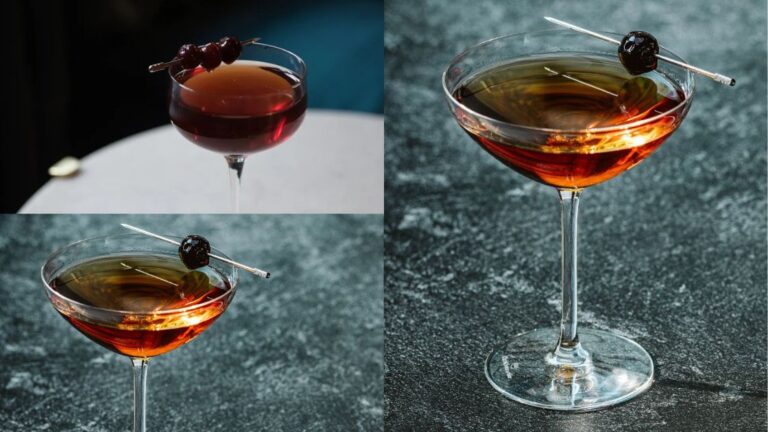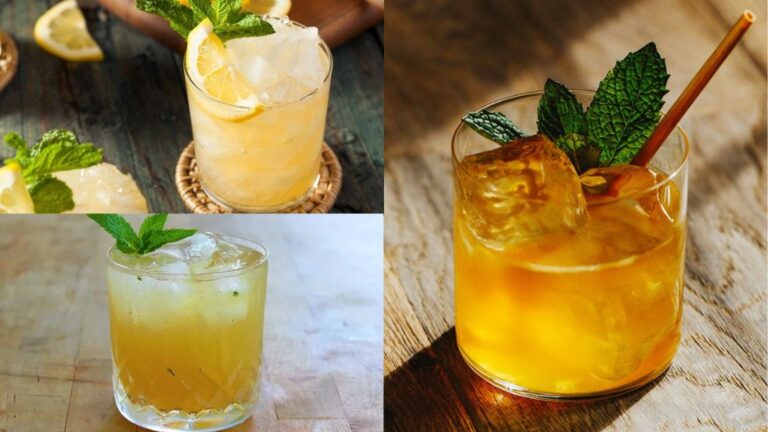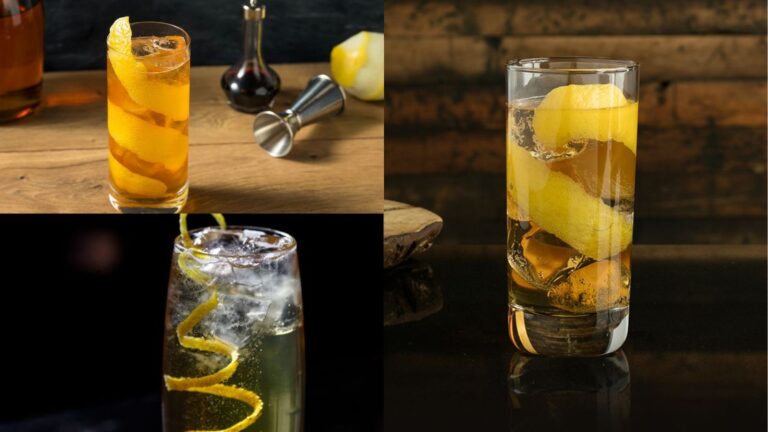Whisky or Bourbon
Whether whisky or bourbon is better depends largely on personal taste preferences, as both are distinct types of whiskey with unique characteristics. Here’s a quick comparison to help you decide which might suit your palate:
Whisky:
- Varieties: Includes Scotch, Irish whiskey, Canadian whisky, and more. Scotch whisky, for example, often has a smoky or peaty flavor, especially in single malts.
- Ingredients: Made from a variety of grains, including barley, corn, rye, and wheat.
- Flavor: The flavors of whisky vary widely depending on its origin, aging process, and grain mixture. Scotch tends to be earthy, peaty, or smoky, while Irish whiskey is smoother and lighter.
Bourbon:
- Ingredients: Must contain at least 51% corn, giving it a naturally sweeter flavor.
- Production: Aged in new, charred oak barrels, which impart a rich, caramelized flavor to the spirit.
- Flavor: Bourbon is typically sweeter, with notes of caramel, vanilla, and oak. It’s also generally smoother and less smoky than Scotch whisky.
Personal Preference:
- Bourbon: If you prefer a sweeter, smoother drink with caramel and vanilla notes, bourbon might be more to your liking.
- Whisky: If you enjoy a wider range of flavors, including more smoky or peaty notes (especially in Scotch), you may lean toward whisky.
Ultimately, one isn’t necessarily better than the other—it comes down to the flavor profiles you enjoy most.
Understanding Bourbon
When you’re talking about whisky vs bourbon, it’s worth getting what makes bourbon its own thing, right? Let’s see what’s cooking:
Definition of Bourbon
So, bourbon is essentially American whiskey, but to earn the name, it has some hoops to hop through. As per the good old American Bourbon Association, bourbon’s gotta hail from the USA and be made from a special grain mix. Fun fact– about 95% of all bourbon is made in Kentucky.
Ingredients and Mash Bill
At the heart of what separates bourbon from other whiskeys is the mash bill, or the grain recipe, if you will. For bourbon to be legit, it has to have at least 51% corn (Food & Wine), giving it that signature sweet kick. Then there’s rye, wheat, and barley, tossed in varying doses to spice things up a bit.
| Ingredient | Minimum Requirement (%) | Common Flavor Contribution |
|---|---|---|
| Corn | 51% | Sweetness |
| Rye | Variable (up to 37%) | Spiciness |
| Wheat | Variable (up to 20%) | Softness and Bread-like |
| Barley | Variable (up to 12%) | Nutty and Malted Flavors |
The grain mix affects bourbon’s final taste. Like, the more rye you throw in, the livelier the spice; pump up the wheat, and you’ve got yourself a smoother sip (Tasting Table).
If you’re keen to dive deeper into how these ingredients change during production, why not peep how to drink whiskey or see how it stands against other drinks like whiskey vs vodka?
Getting these bourbon basics down lets you really savor what sets this whiskey apart, especially when you’re weighing up whisky vs bourbon and how each ingredient plays its part in shaping whiskey’s many faces.
Production Process of Bourbon
Distillation and Barreling
Making bourbon isn’t just throwing corn in a pot and hoping for the best—there’s a science to it. Bourbon’s journey kicks off with distillation, and it’s gotta stick to some pretty strict rules to earn its name. For one thing, it can’t be distilled over 160 proof. Why? To make sure all that bold flavor and those yummy oils stick around.
When it’s time for the bourbon to take its next step, it hops into new charred oak barrels. These barrels aren’t just for show—they give bourbon its signature flavors. Depending on how toasty they’re charred, you might sip hints of vanilla or maybe a smoky whisper (Tasting Table).
Barreling has more rules—bourbon can’t be more than 125 proof in the barrel. This proof sweet spot helps suck all those delicious oak flavors out of the barrel. Before any swigging though, it’s tamed to 80 proof or more to strike the right balance.
Aging Requirements
Now let’s chat about aging, where bourbon’s magic really blooms. This stage is where bourbon gets its swagger—its taste, smell, and depth evolve here. According to the rule book, the aging game happens only in brand-new, charred oak barrels. This all-butensures the bourbon’s got its own one-of-a-kind stamp.
In those barrels, our friend bourbon mingles with the charred oak. Over time, they dance together and swap flavors. That’s how bourbon shows off its rich caramel, vanilla, and spice highlights. Even where and the kind of weather in its storage digs can put its own twist on the flavor (Lux Row Distillers).
| Bourbon Characteristics | Impact of Aging |
|---|---|
| Flavor | Picks up caramel, vanilla, and spice vibes |
| Aroma | Deepens and gets more interesting |
| Color | Turns a deep, inviting amber |
| Intensity | Reaches a mellow, full-bodied character |
| Extra Notes | Adds smoky tones from the barrel char |
The strength that bourbon hits the barrel matters too. A lower ‘entry proof’ changes up how flavors seep in, compared to a higher proof. Blending different barrels afterward helps keep that familiar taste folks know and love (Tasting Table).
Ready to nerd out more on bourbon and its boozy brothers? Swing by our pieces on whisky vs whiskey and scotch vs whiskey. Feeling curious about the brand big shots? Check out our guides on makers mark whisky and jack daniels bourbon.
Factors Influencing Bourbon Flavor
When you really start breaking down what makes bourbon tick, you’ll see it’s all about those little ingredients and steps that create its one-of-a-kind flavor. From the grains you pick to how you cook it up, every part of making bourbon shapes how it tastes in your glass.
Mash Bill and Grain Selection
Think of the mash bill as the bourbon’s recipe card. It’s a mix of grains that plays a big part in flavor. Here’s what each grain brings to the party:
- Corn: This is the sweet talker, making up at least 51% of the mix. It’s mainly why bourbon’s got that sugary kick.
- Rye: Spices things up, adding a bit of peppery flair.
- Wheat: Makes things smooth and creamy, like a cozy sweater for your taste buds.
- Barley: This is the sidekick that helps out during fermentation and sneaks in some malty goodness.
How you mix these grains and how much you use them totally change up how bourbon’s flavors come together (Tasting Table).
| Grain | Flavor Contribution |
|---|---|
| Corn | Sweetness |
| Rye | Spiciness |
| Wheat | Creaminess |
| Barley | Maltiness |
Fermentation and Yeast Strains
Fermentation is kind of like magic. Yeast gobbles up the sugar from the grains and turns it into alcohol, bringing along a busload of flavor vibes:
- Yeast Selection: Different yeast – different vibes. Some make it fruity, others floral, while some add a spicy earthiness.
- Fermentation Time: Longer fermentation means deeper, richer aromas kicking around in the bourbon (Tasting Table).
Distillation Techniques
Here’s where science meets art. How you distill bourbon can really shake up the flavor scene:
- Pot Stills: These are the artists. They make small batches with richer feels and flavors.
- Column Stills: Efficiency masters! They pump out lighter spirits more consistently and quickly.
And then there’s the proof level. Distill at lower proof to keep more of those tasty compounds that make bourbon, well, bourbon (Tasting Table).
Want to become a bourbon wizard? Dive into more on how bourbon stacks up against its whiskey cousins in our whisky vs whiskey article. For nitty-gritty details on what makes each brand tick, check out our guides on Maker’s Mark whisky and Jack Daniel’s bourbon.
Kentucky Bourbon Influence
Origin and History
So you’re curious about what sets bourbon apart from regular whisky? Let’s talk turkey about bourbon’s origin and why it’s a big deal. Like how Champagne isn’t just any bubbly drink, bourbon shares a special story and spirit. Its name hails from old Bourbon, now Bourbon County, Kentucky. For something to be called “Kentucky bourbon,” it needs to be cooked up and aged right there in Kentucky. This rule makes sure it stays true to its roots and flavors.
Kentucky’s got bourbon in its blood. Thanks to its limestone-rich water, this state gives bourbon its signature taste. Plus, with the sweltering summers and chilly winters, the barrels breathe in a way that amps up the flavor inside.
Kentucky Bourbon Distilling
Getting a good look at how Kentucky bourbon’s distilled? That’s where you really get the lowdown on what makes it special. Kentucky churns out most of the bourbon—about 95% of it. Even if it’s made somewhere else, it can’t sport the “Kentucky Bourbon” badge unless it’s both cooked up and aged in Kentucky.
The magic begins with a mash that’s gotta be at least 51% corn. Bourbon’s high corn diet gives it that distinct sweetness that puts it heads and shoulders above other types of whisky (American Bourbon Association).
Here’s a quick cheat-sheet showing what makes Kentucky bourbon the real McCoy:
| Factor | Kentucky Bourbon |
|---|---|
| Origin | Bourbon County, Kentucky |
| Production Requirement | Distilled and aged in Kentucky |
| Percent of World Production | 95% |
| Key Ingredient | At least 51% corn |
| Unique Qualities | Sweet notes from corn and limestone water |
The Bourbon Industry in Kentucky
Kentucky overflows with distilleries, building the state’s bourbon empire. Its perfect blend of geographical perks makes for killer bourbon, acclaimed from one corner of the earth to the other.
Pour yourself a tall one and dive into our other pieces on bourbon and whiskey, like makers mark whisky, scotch vs whiskey, and jack daniels bourbon.
Kentucky keeps pouring its heart into bourbon, keeping this American gem top-shelf and a hit with whiskey lovers everywhere.
Popular Bourbon Brands
Maker’s Mark and Variants
When it comes to bourbon, Maker’s Mark is about as iconic as it gets, a trusty pick whether you’re a newbie or a seasoned sipper. This bourbon is a staple, earning its stripes with quality and a taste that balances smoothness and richness. You can find it just about anywhere folks appreciate a good pour.
Maker’s Mark ain’t just about the classic bottle. They offer some twists on their formula, each bringing something a little different to the table. Check out their main options:
| Maker’s Mark Variant | Description |
|---|---|
| Maker’s Mark Original | The go-to choice, recognized for its smooth and full-flavored profile. |
| Maker’s 101 | Delivers a bit more kick with its higher proof, perfect if you fancy a bolder sip. |
| Maker’s 46 | Aged with French oak, this one’s got a complex and richer vibe going on. |
Want more details on Maker’s Mark’s line-up or planning your next tasting adventure? Swing by makers mark whisky.
Elijah Craig and Barrel Proof
Elijah Craig is like the dependable friend who never lets you down. Known for its fair pricing and top-notch flavors, this brand’s no stranger to praise. But if there’s one variant that gets the crowd talking, it’s got to be the Barrel Proof. Served straight from the barrel, this is bourbon in its rawest form—ideal for those who crave an intense, authentic taste.
Elijah Craig doesn’t just do quality, it does consistent quality. It even grabbed the “Whisky of the Year” title back in 2017! Here’s a peek at what they offer:
| Elijah Craig Variant | Description |
|---|---|
| Small Batch | Balanced flavors of vanilla, caramel, and just a pinch of spice. |
| Elijah Craig Barrel Proof | Packs a punch with high proof and full-bodied richness. |
Feeling curious about the world of Elijah Craig? Dive deeper by exploring how to drink whiskey and whiskey straight.
These bourbon titans aren’t just about reliable sips, they’re about delivering something for everyone. Whether it’s the smooth ride of Maker’s Mark or the bold kicks from Elijah Craig, there’s a bourbon waiting to match your taste buds. For more face-offs and tidbits, check out our articles on whisky vs whiskey and scotch vs whiskey.
Bourbon vs. Scotch Whisky
Production Location
When you’re pitting bourbon against Scotch whisky, where they’re made is a huge deal. Bourbon calls the United States its home, with Kentucky as its unofficial capital – seriously, they take their bourbon seriously there. Scotch whisky, on the flip side, hails exclusively from Scotland, sticking to strict rules laid out back in 2009 by the Scotch Whisky Regulations.
Grain Types and Maturation
Bourbon and Scotch aren’t just about the label; they differ based on the grains and aging tricks. Bourbon’s got that sweet vibe thanks to being at least 51% corn. You’ll find grains like barley, rye, and wheat getting involved too.
Scotch whisky loves its malted barley. If you’re sipping on a Single Malt, it means all that barley goodness comes from one distillery (Copenhagen Distillery).
How these spirits spend their aging days is pretty different. Bourbon takes a vacation in new, charred oak barrels, adding layers to its personality. It’s called straight bourbon if it’s hung out for at least two years, but many opt for a solid four.
Scotch, though? It likes worn-in barrels, often ones that used to house bourbon or sherry. This gives Scotch some seriously unique flavor notes. The bare minimum aging for Scotch whisky is three years.
| Attribute | Bourbon | Scotch Whisky |
|---|---|---|
| Primary Location | U.S. (mostly Kentucky) | Scotland |
| Main Grain(s) | At least 51% corn, plus others | Mostly malted barley |
| Aging Requirements | Min 2 years in charred new oak | Min 3 years in used barrels |
Discovering these core differences helps you appreciate the special touches in each glass. Curious for more? Check out our deeper dives, like whisky vs whiskey and scotch vs whiskey. Whether you’re into bourbon’s sweet, strong hit or Scotch’s layered journey, knowing what goes into your drink makes choosing it all the sweeter.
